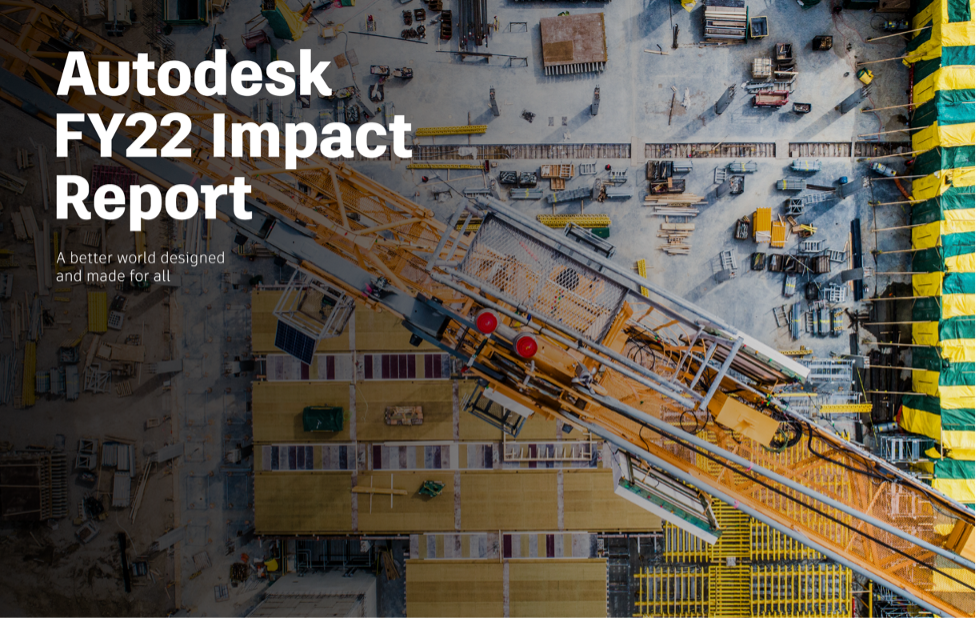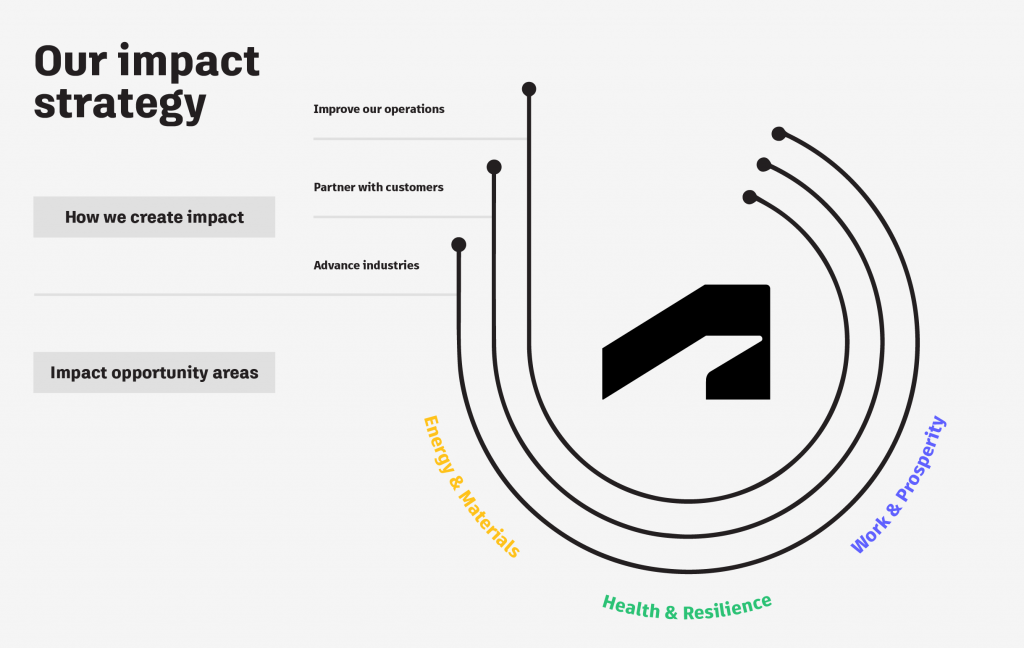A version of this letter appears in Autodesk’s FY22 Impact Report. Forty years ago, a group of young technologists set out to change the world by making CAD tools more accessible. Their vision was simple but powerful: that widespread access to design technology would benefit industries and society as a whole. That vision has grown into what Autodesk is today — a global leader in design and engineering software with a mission that remains deeply rooted in innovation and impact. Over the decades, Autodesk has evolved, but our core values have stayed the same. We believe that technology, when used thoughtfully, can help address some of the biggest challenges facing humanity. From reducing carbon emissions to improving public health and fostering economic opportunity, we see our role as a catalyst for positive change. This moment in time demands even greater focus and action. Climate change, inequality, and global instability are not distant threats — they are present realities. In the short term, we're seeing the effects of inflation, supply chain disruptions, and shifting work models. These issues have real consequences on people's lives and businesses. As a company, we recognize our responsibility to respond with both urgency and purpose. Last year, we launched a new impact strategy that reflects our commitment to driving meaningful change across environmental, social, and governance (ESG) dimensions. While we've made progress, there's still much to do. Our approach is built on three key areas: improving our own operations, partnering with customers to drive sustainable outcomes, and advancing entire industries through innovation and collaboration. Autodesk’s impact strategy includes how we improve our operations, partner with customers and advance industries. This report outlines our journey and performance across these interconnected areas. Each builds on the other. By measuring and managing our own impacts more effectively, we’re better positioned to support our customers in doing the same. And by delivering solutions that drive real-world outcomes, we help accelerate the transition to a more sustainable, resilient, and inclusive future. We understand that leading by example is essential. That’s why we continue to invest in sustainability within our own operations. Our Carbon Fund supports our net-zero and renewable energy goals, and we’ve recently doubled our internal carbon price to reflect market realities. We're also making progress toward our diversity and inclusion targets, strengthening our governance structures to ensure accountability across all ESG initiatives. As we deepen our relationships with customers, we're helping them build smarter, more sustainable solutions. Whether it's designing net-zero buildings, creating resilient infrastructure, or reducing waste in consumer goods, we're equipping them with the tools they need to succeed. Last year, we expanded our platform capabilities with features like microclimate analysis, digital twin solutions, and enhanced building design tools. We also introduced new factory efficiency tools for manufacturing and broadened our water management offerings — all aimed at helping customers mitigate risk and meet growing demand for sustainable practices. Bristol Water has provided clean, fresh drinking water to its customers since 1846. To help restore water quality, Bristol Water engineers used Innovyze, an Autodesk company, to calculate how much freshwater could move through the network. Bristol Bridge, Bristol, England. By investing in transformative technologies, we help our customers redefine their processes and industries. Through the integration of design and production, the convergence of industry sectors, and the expansion of our ecosystem, we enable insights that reduce environmental impact and drive long-term value. Our certification programs and policy advocacy further support inclusivity and broader systemic change. I’m truly grateful to our customers, employees, and investors for their ongoing support. Together, we are building a better future — one that is designed for everyone. By staying true to our values, focusing on outcomes, and working closely with our communities, I believe we will continue to make a meaningful difference in the world. Read Autodesk’s FY22 Impact Report to learn more. Pit balls are one of the toys of children's playgrounds. They can also be used in places such as Inflatable Swimming Pools, inflatable castles, water parks and field activities, which can bring wisdom and fun to children. baby ball pit, ball pit balls, portable ball pit, inflatable ball pit, soft play ball pit Lixin Outdoor Product Co., Ltd , https://www.pdinflatable.com

Improving Our Operations
Partnering With Customers

Advancing Industries
Pit ball uses two per porvis blowing techniques. Ball has pores, but the pores are all in the mold, and the pores are very small. Due to the production of plastic at high temperatures, when the plastic began to melt at high temperature, when it flowed to the mold ball cup, it instantly fixed the mold, instantly blown air, opened the mold, and naturally formed a spherical shape.
If you observe carefully on the sphere, there are traces of tiny bleaching holes, but this does not affect the safety of the product.
The Inflatable Toys played by children pay more attention to safety issues. The sphere is tight and not leaked, and it will not explode in the play.
Autodesk Impact Report: A Message from our CEO